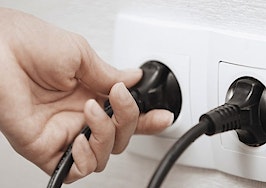Takeaways:
- List-building is a hot topic in marketing.
- As people become more protective of their inboxes, the quality of the list members becomes just as important as the size.
- You can employ the sideshow method and a bundle of resources to start your own sideshow.
List-building is a hot topic on the Internet, with marketers and entrepreneurs all trying to gain traction and recognition by increasing the size of their list.
Many agents have been ahead of this curve for years by amassing sizable lists of contacts through a variety of methods.
As people become more protective of their inboxes, the quality of the list members becomes just as important as the size. A thousand excited, engaged members are better than 5,000 disinterested people who gave out their email a few years ago.
So what can you do differently to capture the interest of a dedicated niche in a way that also demonstrates your value in the real estate market?
Create a sideshow
I call this the “sideshow” method because you are creating value and putting on a show of sorts. It’s related to but outside of your primary business of real estate.
Your community trusts you to provide them with the information that improves their lives. It could be on schools, restaurants, concerts or farmers markets.
To begin, you must choose your sideshow’s topic. (If you’re wondering what type of sideshow you should choose, I have a special bundle to send you that explains all of these steps in even more detail. It includes a topic selection checklist and the five-email sequence I used to drive interest, excitement and sign-ups.)
I chose farmers markets in Nashville because:
- I know this is something people in my demographic care about.
- There is little information available online.
- What is available is widely dispersed.
- Search results are high (289,000 searches), and first-page content is low. There is one solid page, but still isn’t updated very often.
- Results trend toward individual markets — without a curated home for information on all of Nashville’s farmers markets.
I also have a hypothesis that local farms rely on this content and will be excited to partner with my list to connect with customers. When I started, I didn’t have contacts with farmers, either, but I pushed on with my theory. I contacted 15 local farms and asked them to sponsor a giveaway (more on that later).
How would this information serve a real estate agent?
A list equals trust, and you have the responsibility to earn it with each message. That means the list doesn’t slowly become a sales page for your recent listings.
What’s exciting is that trust is transferable. If you build trust over time and share your story and the work you do, fans will look to you for help when they’re hot.
Think about Apple. When it came out with the iPad, did you think, “I don’t trust them to make a tablet.” Or this year with the watch: “This isn’t something I trust them to build.”
Millions of people trust Apple to connect them to each other. It doesn’t matter if it’s phones, tablets, watches or anything else in the pipeline. It’s the same for you.
Step 1: Outreach to friends and family
Start here. Even before you send a mass email out to your current list or networking groups you’re a part of, contact your friends and family with regular ol’ email. Because the first phase doesn’t really involve doing things that are fast or scale. All I did in the first few hours was send personal messages and emails to friends.
Not a mass email.
Not an invitation to visit an opt-in page.
A personal email, simply asking if I can share something with them.
When list building — and even content marketing — shakes down, this is the core of how it can be done well and why people will pay attention to you. Sharing useful information that is specific to their needs.
Starting a list doesn’t have to be as difficult as we crack it up to be. Ask the people you know and want to help you. Let them tell their friends, and you’re off.
The tactics aren’t rocket science, but what is important is knowing what steps to take, which places to look, and having the courage to reach out.
I quickly started to see happy responses from people — which validated the idea. Here’s what my friend Nick had to say:
And people started referring other friends (don’t be afraid to ask)…
Step 2: Landing page
Let me tell you why a landing page is good for this stage and not right from the beginning. Once you email your initial list of close connections, a good idea is going to spread pretty quickly.
You need a place for everyone to go, and that’s the landing page. Here’s an example of mine, and you can see how simple it is. In the bundle download I mentioned earlier, there’s a link to watch me set up the landing page in five minutes using LeadPages.
At this point, you don’t have as much control, and that’s a good thing. So you want a place for people to land and opt in to the group.
I spent the rest of day one preparing for steps three and four, the giveaway and quick wins. Both steps are initiated close to each other and, honestly, can be launched in either order.
I started the giveaway first, then quick wins. Next time I’ll switch the order, so I’ll share that progression with you here.
Step 3: Quick wins to encourage the community
At the end of day one, you’ll send email No. 3 to the current list. This email shows a quick win to boost excitement and provide an immediate takeaway for the group. So far in the day, I had researched the different times, locations and dates of the markets and put them all in a Google spreadsheet (see it here).
To share the farmers market information, a couple quick wins stood out. Use the spreadsheet to create a custom Google map (view) with all the locations, and dates and times listed in the details. Then I made both resources public and shared the links with my list.
Please realize that I didn’t create a website, write several blog posts or buy a Facebook ad to do this. I simply researched the information and created two public resources. You can do the same, even with a limited amount of time.
[Tweet “I simply researched the information and created two public resources. You can do the same.”]
Step 4: Giveaway to drive excitement (and signups)
At the beginning of day two, send email No. 4 in the sequence, announcing the giveaway. The best tool you can use for this type of giveaway is the KingSumo Giveaways plug-in for WordPress.
Why? Because it builds in a viral component to the contest by motivating people to share the links. Think about that for a second.
What’s the biggest problem with most contests? You aren’t motivated to share because each sign-up actively decreases your chances of winning.
And you don’t want to share; you want to win.
Sounds terrible when you say it out loud, but it’s true, right?
KingSumo is different. When you sign up, you receive a personal link to share with others. For each person who signs up with your link, you triple your chances of winning.
Now, sharing is caring.
I created a giveaway that took advantage of this. The prize was four boxes of produce from a local farm, valued at $100. I posted that two people would win.
Note: The KingSumo Giveaways plug-in for WordPress is $198, but if you use the code “curious50” you’ll grab 50 percent off.
Here’s another important part.
I didn’t have the prize confirmed when I started the giveaway.
I didn’t have any farmer contacts to call and ask to hook me up.
But I launched anyway.
I used the “Field of Dreams” approach to this giveaway — if you build the list, the sponsors will come. I decided to contact the farms with a set number of fans they could reach, rather than asking without an audience.
For me, pitching with a list behind me was a better option. I believe you are better off asking, “I can put your product in front of 75 people. Want to be a part of this?”
Instead of, “Hey, I don’t know how many people are interested, but can you help?”
I have already validated their interest and the group’s viability, and it gives authority when speaking to the farmer. Chances are high you will get someone to agree, and when you do, turn around and announce it to your group. This is email No. 5 in the sequence.
The results
If you do take the farmers market niche as a sideshow of your own, here’s a suggestion. When you contact the market directors, ask these three questions:
- Do I have the right information for you?
- Am I missing anything you would like to include?
- Are there any special market days you’d like to list?
By asking several times how you can help them, you’re proving that you have their back. Then ask if they are willing to share your guide or group with their community.
Now that people are really excited and the giveaway is running, send email No. 5. Share more about the farm sponsoring the giveaway, and remind people to share with their friends. I promoted it more on social media myself at this point, and at the end of 10 days, I had 78 members.
If you like, you can share another email reminding people that 24 hours remain in the giveaway. I also included some market news for the weekend and a special festival that was going on. People loved it, including this group member:
So in the next couple of weeks, this story, this group, this start-from-scratch idea is going to be featured on a site with thousands of readers and members.
All because I gave myself time to test an idea.
With the steps I’ve outlined in this post, I hope you will take the opportunity to create a sideshow. As a special for Inman readers, I’ve created a special bundle to help you take action. It includes:
- 4 steps to creating a sideshow + checklist.
- Access to the Google Doc with the (always-updated) email sequence copy.
- 6 extra ideas for Realtor-friendly sideshows.
- P-S-A (Problem-Solution-Application) method worksheet.
- How to setup a landing page and email list in five minutes.
Click here to get your bundle, and we’ll stay in touch.
Matt Ragland is a content strategist based in Nashville. As a special for Inman readers, visit EngAgentCourse.com/Inman for a free guide to content marketing and social engagement. You can also follow Matt on Twitter at @MattRagland.









